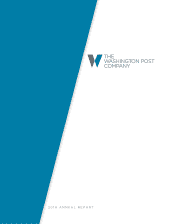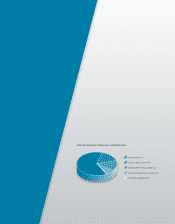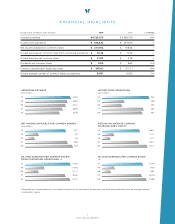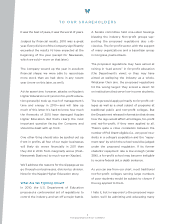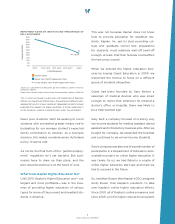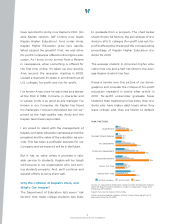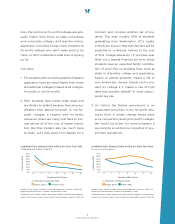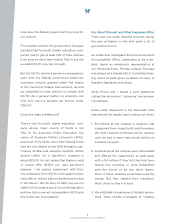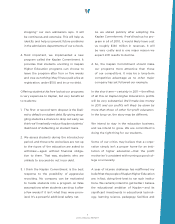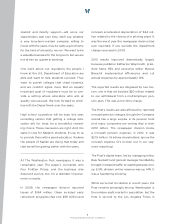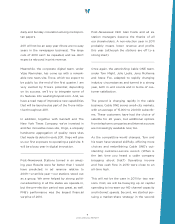Washington Post 2010 Annual Report Download - page 5
Download and view the complete annual report
Please find page 5 of the 2010 Washington Post annual report below. You can navigate through the pages in the report by either clicking on the pages listed below, or by using the keyword search tool below to find specific information within the annual report.
3
2010 ANNUAL REPORT
fewer poor students. We’ll be seeking to enroll
students with somewhat greater means (we’re
budgeting for our average student’s expected
family contribution to double). As a business
decision, this makes complete sense. As federal
policy, it seems odd.
As I write, the final form of the “gainful employ-
ment” regulation isn’t yet decided. But busi-
nesses have to draw up their plans, and the
plan described above is at the heart of ours.
What Does Kaplan Higher Education Do?
Until 2010, Kaplan’s Higher Education unit—our
largest and most profitable—was in the busi-
ness of providing higher education of various
types for some of the poorest and neediest stu-
dents in America.
This was not because Kaplan does not know
how to provide education for wealthier stu-
dents. Kaplan, Inc. got its start providing col-
lege and graduate school test preparation
for students, most relatively well-o (well-o
enough, at least, that their families could aord
the test prep course).
When we entered the higher education busi-
ness by buying Quest Education in 2000, we
welcomed the chance to focus on a dierent
group of students altogether.
Quest had been founded by Gary Kerber, a
salesman of medical devices who was smart
enough to notice that whenever he entered a
doctor’s oce or hospital, there was likely to
be a help-wanted sign.
Gary built a company focused on training very
low-income students for medical assistant, dental
assistant and introductory business jobs. After we
bought his company, we expanded the business
and continued to serve low-income students.
Gary’s company was also one of a small number of
participants in a Department of Education dem-
onstration project on online higher education. It
was timely for us; we had failed in a couple of
online higher education start-ups and knew we
had to succeed in the future.
So Jonathan Grayer, then Kaplan’s CEO, assigned
Andy Rosen, then Kaplan’s president, to take
over Kaplan’s online higher education eorts.
Since 2001, all of Kaplan’s online programs, and
since 2005, all of its higher education programs
REPAY MENT RATES BY INSTITUTIONS’ PERCENTAGE OF
PELL RECIPIENTS
0%
5%
10%
15%
20%
25%
30%
35%
40%
45%
50%
55%
>60%50%–60%40%–50%30%–40%<30%
Kaplan (28%)
Public Non-Profit Repayment Rate
Linear (Public Non-Profit Repayment Rate)
% Pell Recipients
Repayment Rate
Source: U.S. Department of Education, ge-data-model.xls, 2009, institutions
grouped in deciles.
Kaplan Data Source: Kaplan internal data for comparable students, 2003–04.
R2=0.9913
This is a chart we showed in a discussion with Department of Educa tion
ocials; one Depart ment ocial told us they preferred a dierent meth-
odology that results in a lower correlation. Independent research has been
published that supports the higher correlation. A further explanation is
on the Company’s website, washpostco.com, under “Annual Reports.”

